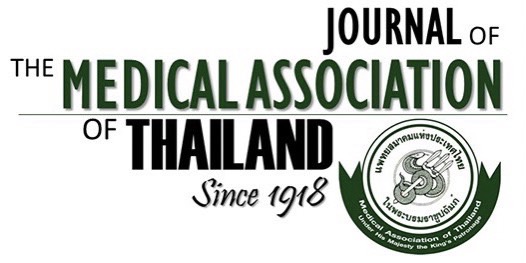Utilizing a Registry for ST Segment Elevation Myocardial Infarction from a Tertiary Care Hospital in Thailand: Opportunities to Improve the Quality of Care
Wiwun Tungsubutra MD*, Chunhakasem Chotnaiwattarakul MD**, Adisak Maneesai MD*, Saowanee Naowapanich*, Pradit Panchavinnin MD*, Damras Tresukosol MD*, Rewat Phankingtongkhum MD*, Nattawut Wongpraparut MD*
Affiliation : * Divison of Cardiology, Department of Medicine, Faculty of Medicine Siriraj Hospital, Mahidol University, Bangkok, Thailand ** Her Majesty’s Cardiac Center, Faculty of Medicine Siriraj Hospital, Mahidol University, Bangkok, Thailand
Background : Treatment of acute coronary syndrome requires a reliable measurement of quality for ensuring evidence-based
care. Clinical registries have been used to support quality improvement activities in some countries, but there are few data
concerning their implementation in developing countries. In 2008, a multidisciplinary Siriraj ST segment elevation myocardial
infarction (STEMI) registry team was formed with the intention to improve the process of care. This report summarizes
observational data collected within the first year to characterize the clinical profile, management and in-hospital outcomes of
STEMI patients at the author’s institute.
Material and Method: The present study is a prospective, observational study. From June 2008 through June 2009, data
from all consecutive patients presenting within 24 hours of STEMI at Siriraj Hospital were collected. The patient’s data on
demographics, procedures, medications and in-hospital outcomes were collected.
Results : During the 1-year period, 112 patients with STEMI were enrolled. The mean age was 59.3 years old and 81.3% were
males. There was a high prevalence of diabetes, hypertension, dyslipidemia and current smoking. Median time from symptom
onset to presentation was 120 minutes. 98 patients (84.8% of the patients) received reperfusion therapy in the form of
thrombolytic therapy (21.4%) or primary percutaneous coronary intervention (PCI, 63.4%). For thrombolytic therapy, the
median door to needle time was 68 minutes. Rescue PCI was performed in 20.8% of the thrombolytic treated patients. For
primary PCI, the median door to balloon time was 118 minutes. In-hospital coronary artery bypass graft surgery was
performed in 6% of the patients. In-hospital mortality rate was 9.8%. Re-infarction and stroke were rare events.
Conclusion : Despite a high utilization rate of reperfusion therapy the time to reperfusion therapy exceeds the length of time
recommended by current guidelines. The authors’ findings provide important data for future benchmarking and represent a
significant opportunity for quality improvement in STEMI-related care and outcomes.
Keywords : Acute coronary syndrome, ST-segment elevation myocardial infarction, Thrombolytic therapy, Primary percutaneous coronary intervention, Quality of care



